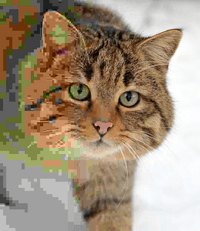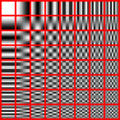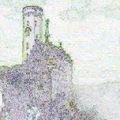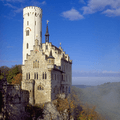JPEG facts for kids

A photo of a european wildcat with the compression rate decreasing, and hence quality increasing, from left to right
|
|
| Filename extension | |
|---|---|
| Internet media type |
image/jpeg
|
| Type code | |
| Uniform Type Identifier (UTI) | public.jpeg |
| Magic number | |
| Developed by | Joint Photographic Experts Group |
| Initial release | September 18, 1992 |
| Type of format | lossy image format |
| Standard | ISO/IEC 10918, ITU-T T.81, ITU-T T.83, ITU-T T.84, ITU-T T.86 |
JPEG ( JAY-peg) is a commonly used method of lossy compression for digital images, particularly for those images produced by digital photography. The degree of compression can be adjusted, allowing a selectable tradeoff between storage size and image quality. JPEG typically achieves 10:1 compression with little perceptible loss in image quality.
JPEG compression is used in a number of image file formats. JPEG/Exif is the most common image format used by digital cameras and other photographic image capture devices; along with JPEG/JFIF, it is the most common format for storing and transmitting photographic images on the World Wide Web. These format variations are often not distinguished, and are simply called JPEG.
The term "JPEG" is an initialism/acronym for the Joint Photographic Experts Group, which created the standard. The MIME media type for JPEG is image/jpeg, except in older Internet Explorer versions, which provides a MIME type of image/pjpeg when uploading JPEG images. JPEG files usually have a filename extension of .jpg or .jpeg.
JPEG/JFIF supports a maximum image size of 65,535×65,535 pixels, hence up to 4 gigapixels for an aspect ratio of 1:1.
Typical usage
The JPEG compression algorithm is at its best on photographs and paintings of realistic scenes with smooth variations of tone and color. For web usage, where reducing the amount of data used for an image is important for responsive presentation, JPEG's compression benefits make JPEG popular. JPEG/Exif is also the most common format saved by digital cameras.
However, JPEG is not well suited for line drawings and other textual or iconic graphics, where the sharp contrasts between adjacent pixels can cause noticeable artifacts. Such images are better saved in a lossless graphics format such as TIFF, GIF, PNG, or a raw image format. The JPEG standard includes a lossless coding mode, but that mode is not supported in most products.
As the typical use of JPEG is a lossy compression method, which reduces the image fidelity, it is inappropriate for exact reproduction of imaging data (such as some scientific and medical imaging applications and certain technical image processing work).
JPEG is also not well suited to files that will undergo multiple edits, as some image quality is lost each time the image is recompressed, particularly if the image is cropped or shifted, or if encoding parameters are changed – see digital generation loss for details. To prevent image information loss during sequential and repetitive editing, the first edit can be saved in a lossless format, subsequently edited in that format, then finally published as JPEG for distribution.
Images for kids
-
The DCT transforms an 8×8 block of input values to a linear combination of these 64 patterns. The patterns are referred to as the two-dimensional DCT basis functions, and the output values are referred to as transform coefficients. The horizontal index is u and the vertical index is v.
-
Left: a final image is built up from a series of basis functions. Right: each of the DCT basis functions that comprise the image, and the corresponding weighting coefficient. Middle: the basis function, after multiplication by the coefficient: this component is added to the final image. For clarity, the 8×8 macroblock in this example is magnified by 10x using bilinear interpolation.
-
The compressed 8×8 squares are visible in the scaled-up picture, together with other visual artifacts of the lossy compression.
See also
 In Spanish: Joint Photographic Experts Group para niños
In Spanish: Joint Photographic Experts Group para niños






